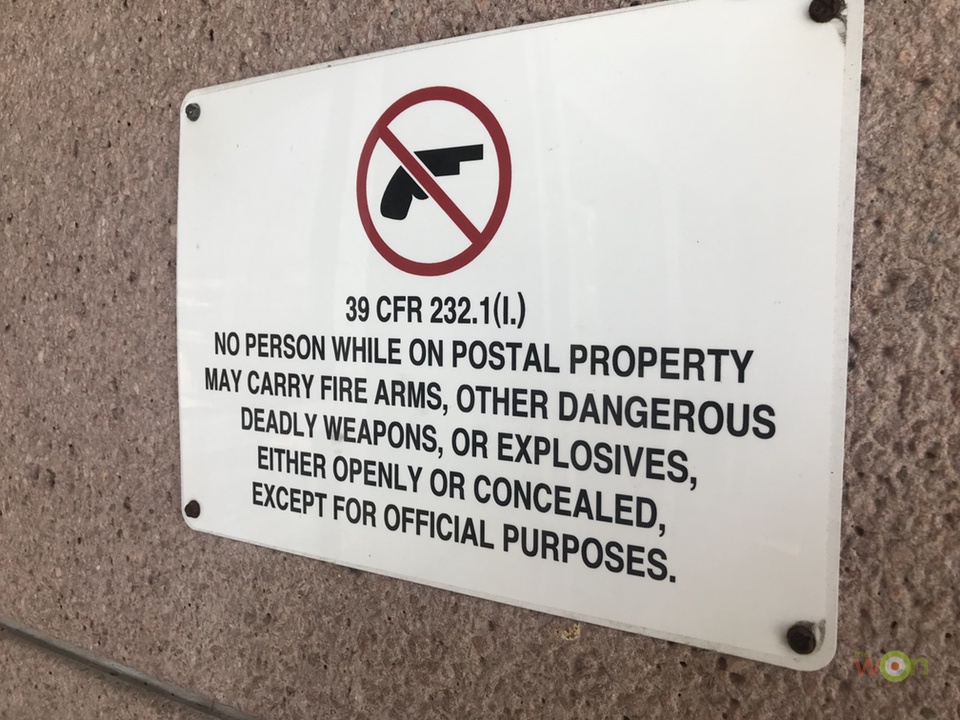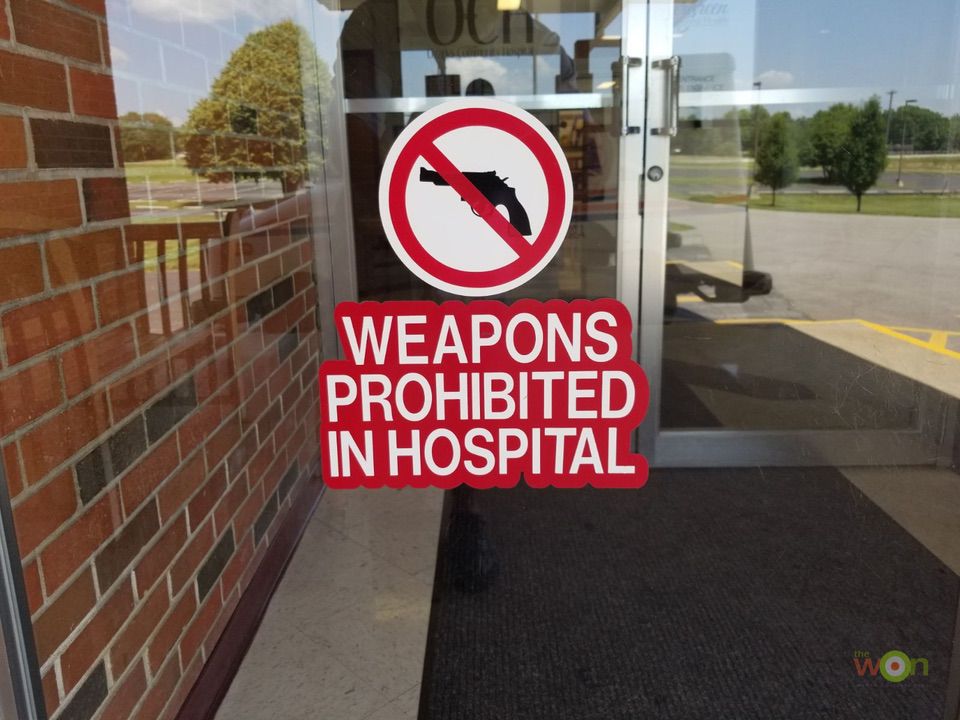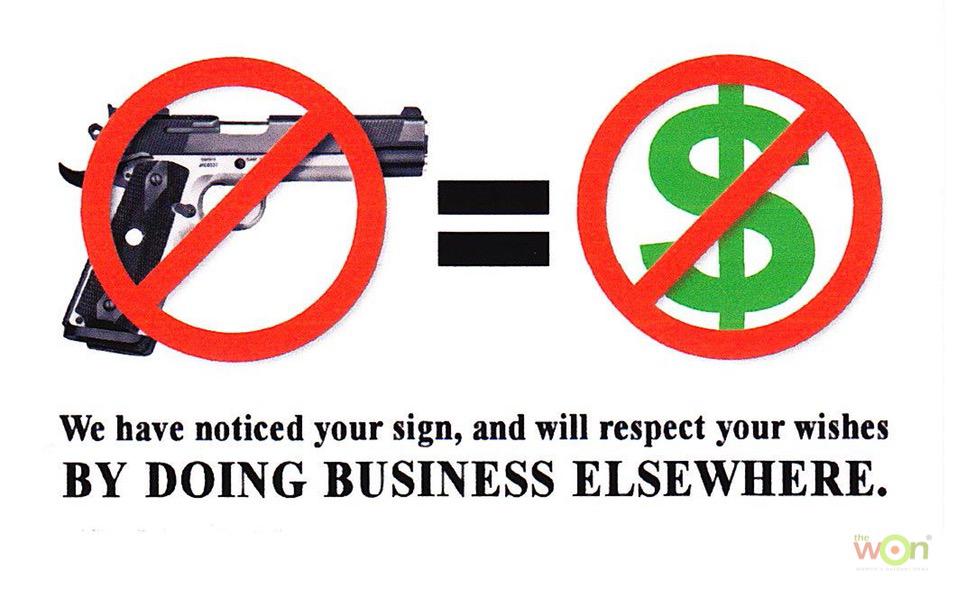These signs can stop you in your tracks at the entrance. You know, those signs that tell you that you can or can’t carry a firearm into the building. What do they mean and how do they pertain to concealed carry license holders? What about those who carry without a permit and live in a “Constitutional Carry” state? Here’s what you need to know about gun signs.
She Shoots 2 is sponsored by CrossBreed Holster
First, let’s look at the various types of concealed carry authorizations.
Concealed Carry Permit/License
Generally speaking, most states have certain criteria in place for obtaining a concealed carry permit (some states call it a license, but I’m referring to the same thing). There are a few states that don’t have any training requirements, but as far as I’m aware and as a qualified CCW trainer in the state of Missouri, I can safely state that most states require a background check and some amount of classroom and range training. In my state, concealed carry permit training entails 8 hours of classroom training, which includes a live-fire portion demonstrating the ability to hit a target with 75% accuracy, the knowledge of gun safety and marksmanship, how to load/unload either a semi-automatic or a revolver, and a demonstration that you understand the laws of our state.
Constitutional Carry – Permitless Carry
Many states have now passed laws that allow legal carrying of a handgun, either concealed or open, without a permit or license. These laws don’t require any training.
Despite citizens having the right to keep and bear arms under the Second Amendment, it’s important to understand gun laws. It’s up to each individual to read and follow the laws of their state regarding permitless carry.
“No-Go” Signs
Common sense tells us that there are certain places that are off-limits to firearms. These “gun-free” zones include courthouses, airports (beyond the secure areas), post offices, military bases, primary and secondary schools and other federal and state properties. There are stiff penalties for carrying firearms here. Likewise, if you’re required to pass through a metal detector, your firearm will get noticed. In these locations, it’s wise to obey the signs and stay on the right side of the law, unless you have appropriate authorization.

Personal Property/Businesses
Privately owned businesses and personal property owners may forbid firearms on the premises. That being said, most of the laws pertaining to these signs subject the person carrying concealed denial to the property. The owner may ask such person to leave if he or she is carrying a firearm. No charges will generally be filed if the person leaves without incident. It’s best not to go in if you’re not welcome and you’re carrying a firearm.

State Laws
Understanding your state laws, as they pertain to carrying firearms, is up to you. It’s often confusing to understand legal jargon. Seek counsel from an attorney who practices in criminal law to better explain, if needed. State laws will be online, verbatim and as passed, and often, explained by legal experts in forums and at other websites.
Traveling to other states also complicates things. Even if that state honors your concealed carry license, their laws as to where you can and cannot carry can vary from yours. Do your research before taking a trip across state lines. Illinois is a bordering state with my state, and believe me, I have done my homework in regard to that particularly unfriendly-to-the-gun state.
Signs
While I could spend all day explaining what a 30.06/30.07 sign means in Texas, or how a sign in Wisconsin must be at least 5 inches by 7 inches and posted prominently near an entrance of a building where said restrictions apply, or even how Tennessee businesses can restrict firearms, but the sign must have “as authorized by T.C.A. § 39-17-1359” in order for it to be legal, it would be a futile endeavor. Unfortunately, there are too many signs, with each state giving varying weight to the force of law regarding each one.

How to deal with gun signs

Know before you go
Gun laws vary considerably between states. If you’re unsure about your state laws, a quick Google search should provide some state-specific pages. Make sure the pages have been recently updated and that you’re reading current laws.
Here is an excellent resource for traveling with guns: The Traveler’s Guide
to the Firearm Laws of the Fifty States, by J. Scott Kappas, Esq. This resource is updated annually to include changes made across the country regarding gun laws. Price: $14.95

Reciprocity map from USA Carry
USA Carry offers a concealed carry reciprocity map.
Freelance writer Stacy Bright holds instructor certifications from the NRA in Pistol & Rifle, as well as being an Range Safety Officer and Refuse to be a Victim instructor. In addition to her NRA credentials, she also is a Missouri CCW instructor and teaches various other home and personal defense courses. “In a field dominated by men, I feel I bring a unique perspective to firearms and training, especially to women. I'm passionate about educating, empowering and developing confidence in those I train. In November of 2014, I started the Southwest Missouri chapter of The Well Armed Woman,” said Stacy. Stacy lives in southwest Missouri, and has been married for 20 years. Visit TWAW Facebook page: The Well Armed Woman-Springfield, MO Chapter. View all posts by Stacy Bright